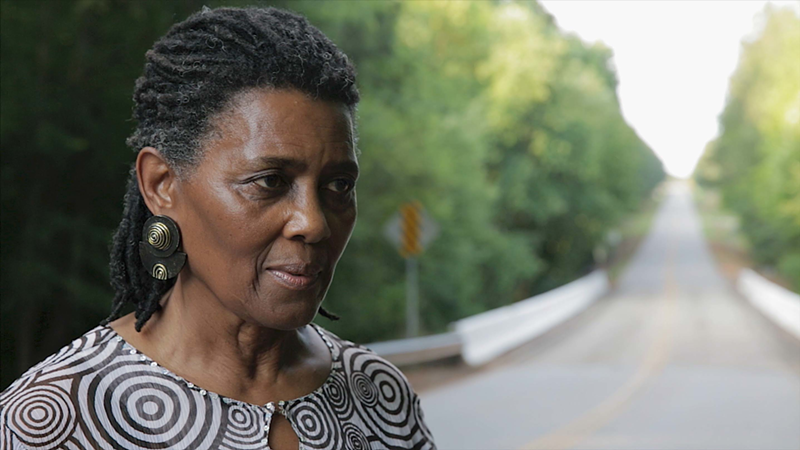Since 9/11, the United States government has engaged in an exercise to settle upon a unified definition of terrorism. But as an important recent film being used as a teaching tool here and elsewhere makes clear, this country should look at its own history for guidance — the way white citizens of the South (and sometimes the North) terrorized African-American residents through lynchings.
For their 34-minute An Outrage, filmmakers Lance Warren and Hannah Ayers traveled to lynching sites in six states, where they spoke with descendants of victims. Using their accounts, plus archival material and new interviews with activists and scholars, the directors vividly show us the impact of these native-soil terror attacks. Their film is available to stream for free through the Public Library of Cincinnati and Hamilton County’s Kanopy service. Those without access to Kanopy will be able to stream it for a small fee from an-outrage.com beginning in May.
Warren and Ayers have been traveling the country presenting An Outrage at educational institutions — in January they were at Xavier University as part of the university’s MLK Week commemoration; they returned to town last week to the National Underground Railroad Freedom Center.
One important lesson of An Outrage is that lynchings were not occasional murders for which perpetrators tried to hide their involvement to escape arrest. They were often treated like parties by the white populace, which turned out by the hundreds, even thousands, to cheer on and celebrate the act without fear of punishment.
Nor were the victims necessarily chosen because they had been accused of crimes; perceived “affronts” to racist society could bring on death and torture. In one notorious case, an African-American postmaster was lynched with his infant daughter because his federal appointment violated the rules of the segregated South Carolina town where he lived.
The current movement toward recognition of lynchings as American terrorism owes much to the Equal Justice Initiative (EJI), founded in 1989 by public-interest lawyer and author Bryan Stevenson with a commitment “to ending mass incarceration and excessive punishment in the United States, to challenging racial and economic injustice and to protecting basic human rights for the most vulnerable people in American society.”
In 2010, its staff embarked on an investigation into the lynchings in the American South. The EJI found that in the 1890s, during the height of the lynching epidemic, “one African-American was killed somewhere in the South every four days.” An Outrage’s website states that more than 4,000 African-American men, women and children died from just after the Civil War to well into the middle of the 20th century.
The EJI staff was intent on looking beyond the specific acts, in the hopes of developing an understanding about the full impact of the terror created by this “sanctioned” violence. What they discovered was that these terrorist strikes were a cause of the migration of millions of black people from the South, creating a class of regional refugees and exiles in our country.
The National Memorial for Peace and Justice, which stands as the culmination of the investigation by the EJI, will open to the public on April 26 in Montgomery, Ala. The six-acre site incorporates sculpture, art and design to symbolically render the thousands of lynching victims across the United States. It reminds us that terrorism had a home here long before 9/11.
At the Q&A following the Freedom Center screening of An Outrage, Warren and Ayers had to worry about potentially being seen as white liberal do-gooders who might not get the full implications of these heinous lynchings. But their film itself helps absolve them of any such charge — it spotlights black citizens addressing their own narratives.
And then, Warren and Ayers in person went a step further in asserting their understanding, boldly stating they used their white privilege in pursuit of getting at a greater truth about how lynchings could go on for so long. They each eloquently spoke of how their skin provided them access that might have been denied to other filmmakers. And also about how powerful it was for them to stand with their subjects in such charged locations.
Only by directly confronting our own terrible past can we, as a nation, truly fight the ongoing acts of terrorism in the world today.


